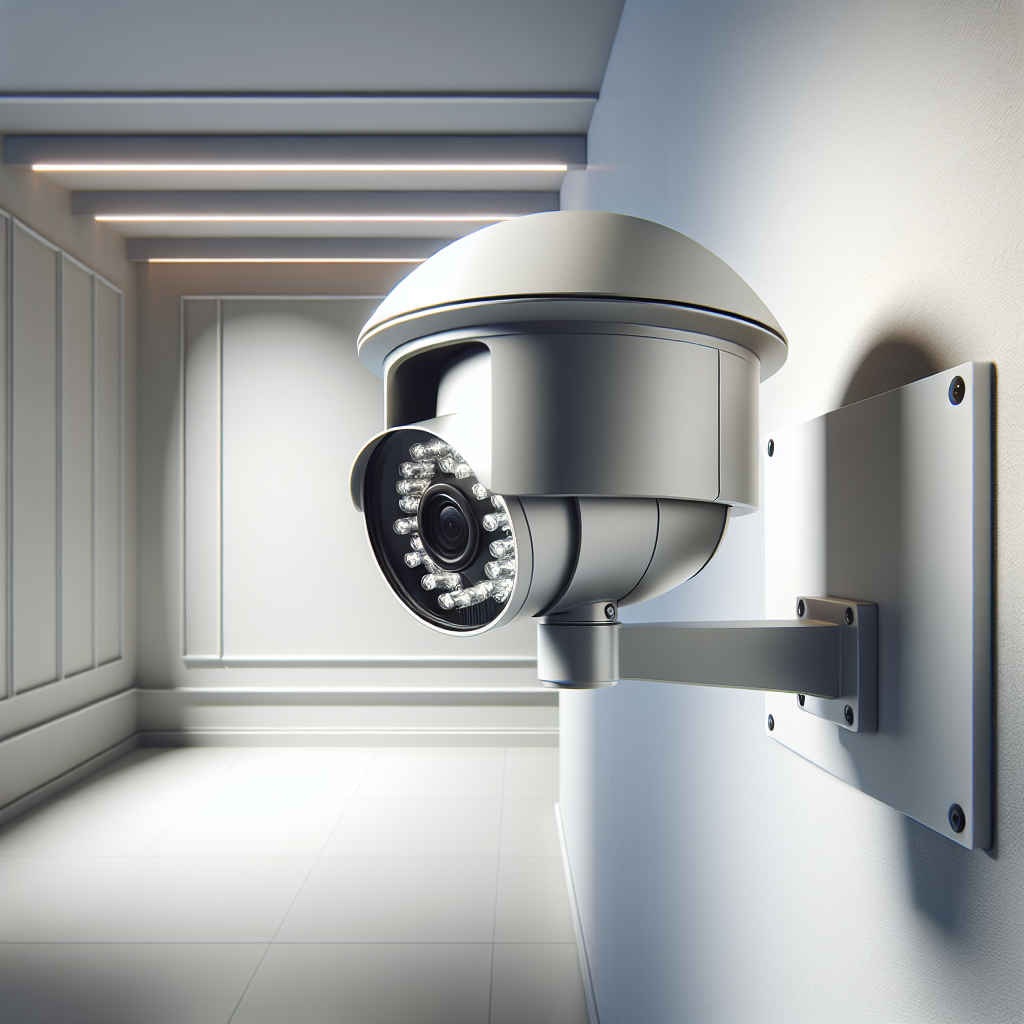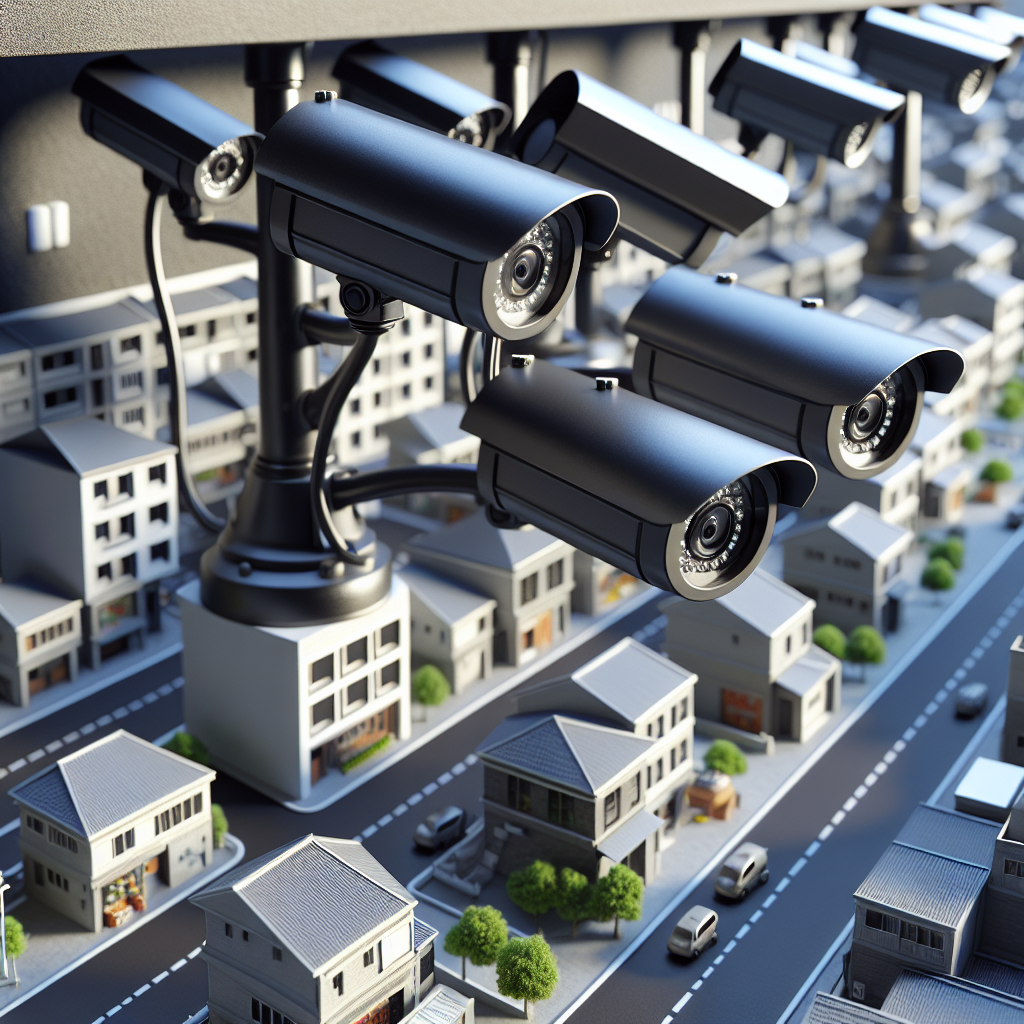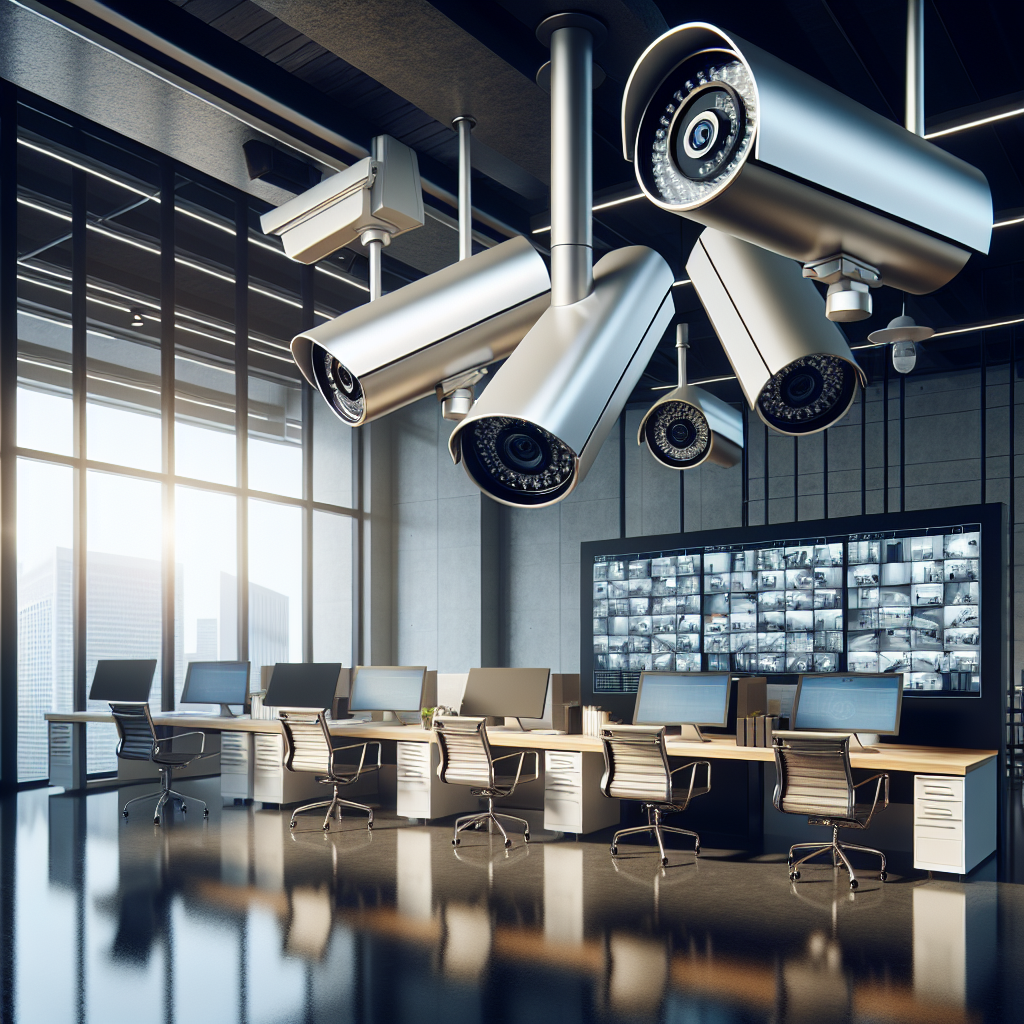Welcome to the world of surveillance where security camera setups are the cornerstone of a robust security plan. In today’s digital age, ensuring the safety of your business or residential property is more crucial than ever. With the right security camera system, you have the ability to monitor activities, deter crime, and maintain records of events. Our complete guide will walk you through the myriad aspects of choosing, installing, and maintaining the best surveillance system for your needs.
Whether you’re looking to safeguard your home against intruders, keep an eye on your business after hours, or simply gain peace of mind, understanding the fundamentals of a security camera setup is the first step. From selecting the ideal camera types to figuring out the best positioning for coverage, this guide will serve as your go-to resource. Furthermore, we’ll delve into the nuances of network configurations and storage solutions to ensure that your security system operates seamlessly.
At Rapid Voice Data Solutions, we realize the importance of a tailored security system. That’s why we’re dedicated to providing you with comprehensive solutions that are not only effective but also user-friendly. Visit our website to learn more and get started today! Click here.
Assessing Your Security Camera Needs

Before diving into the installation of a security camera setup, it’s essential to assess your specific needs. The scale and complexity of your surveillance system will largely depend on the size and layout of the area you wish to monitor. For a small residence, a few strategically placed cameras may suffice. In contrast, a business or larger property might require a multi-camera system with advanced features such as motion detection or night vision.
Consider the following factors when evaluating your security camera needs:
- Area Coverage: Identify which areas are most vulnerable and need monitoring. This could include entry and exit points, high-traffic areas, or secluded spots where theft or vandalism could occur.
- Image Quality: Determine the resolution and field of view required. High-resolution cameras are crucial for identifying details such as faces or license plate numbers.
- Lighting Conditions: Evaluate the lighting available in your surveillance areas. If lighting is poor, consider cameras with infrared or low-light capabilities.
- Indoor vs. Outdoor: Decide whether you need indoor, outdoor, or a combination of both types of cameras. Outdoor cameras need to be more robust and weather-resistant.
- Connectivity: Think about whether you prefer a wired or wireless system based on the layout of your premises and the feasibility of running cables.
- Storage Needs: Estimate the amount of video footage you plan to store and how long you need to keep it, as this will impact your choice of storage solutions.
- Remote Access: If you desire remote viewing capabilities, ensure the system you choose is compatible with your mobile devices or computers.
By carefully considering these elements, you can design a security camera setup that aligns perfectly with your security priorities and provides comprehensive coverage where it’s needed most.
Selecting the Right Security Cameras

Picking the right security cameras is a pivotal step in ensuring your a security camera setup meets your needs effectively. With a plethora of options available in the market, it’s important to understand the different types of cameras and their functionalities. Here are some key camera types and features to consider:
- Dome Cameras: These are ideal for indoor use; their design makes it difficult to determine the direction the camera is pointing, adding an element of uncertainty for potential intruders.
- Bullet Cameras: Known for their long, cylindrical shape, these cameras are suitable for outdoor use with a clear view of specific areas.
- PTZ Cameras: Pan-Tilt-Zoom (PTZ) cameras offer the ability to remotely control the pan, tilt, and zoom functions, providing comprehensive coverage of larger areas.
- Day/Night Cameras: Capable of operating in various lighting conditions, these cameras ensure quality video footage during both daytime and low-light nighttime conditions.
- Wireless Cameras: These offer flexibility in installation and are generally easier to install compared to wired cameras.
- IP Cameras: Internet Protocol (IP) cameras allow for live remote viewing and often provide higher resolution images than analog CCTV cameras.
Additionally, consider advanced features like motion detection, thermal imaging, facial recognition, and integration with other security systems. It’s also important to select cameras with appropriate weatherproof ratings if they are to be installed outdoors. Look for cameras that support secure encryption methods to protect against unauthorized access to your video feeds. Lastly, compatibility with your existing systems and future scalability should influence your choice to ensure your security camera setup can grow and adapt as your security needs evolve.
Essentials of Security Camera Installation
Proper installation is critical for the effectiveness of a security camera setup. To ensure that your cameras perform at their best, there are several key factors to keep in mind during the installation process:
- Positioning: Cameras should be placed at strategic points where they can provide a clear view of the areas to be monitored. Common locations include entry points, hallways, and high-value inventory areas.
- Height: Mounting cameras at the right height is essential to avoid obstructions and to maximize field of view. Typically, cameras are installed at least 8-10 feet above the ground to prevent tampering.
- Lighting: Ensure that cameras are installed in well-lit areas or are equipped with their own night vision capabilities. Poor lighting can result in low-quality video footage.
- Power Source: Wired cameras need to be connected to a power source, so consider the proximity to power outlets. For wireless cameras, regularly check and replace batteries if needed.
- Networking: For IP camera systems, you’ll need to ensure that your network can handle the additional load and that cameras are properly connected to your network for remote access and storage.
Additionally, it’s important to adhere to local privacy laws when installing your cameras. Avoid pointing cameras at public spaces or neighbors’ properties without consent. Professional installation is recommended to navigate these legal considerations and to ensure that cameras are set up correctly. Technicians can also provide valuable advice on the optimal setup for your specific needs. Investing in a professional installation can save time and money in the long run by preventing the need for reinstallation due to improper setup.
Optimizing Camera Placement for Maximum Coverage

Maximizing the coverage of your security camera setup involves strategic camera placement to ensure comprehensive surveillance of your property. Here are some tips to optimize camera placement:
- Field of View: Each camera has a specific field of view. Position cameras to minimize blind spots by covering each other’s blind spots where possible.
- Entry Points: Prioritize camera placement at all entry and exit points, including doors and windows, as these are common access points for intruders.
- High Traffic Areas: Monitor choke points or high traffic areas within a property, such as hallways or staircases, to capture clear images of individuals moving through these spaces.
- Valuables: Place cameras in areas where valuables are stored or displayed to deter theft and to assist in recovery efforts in the event of a burglary.
- Perimeter Surveillance: For outdoor surveillance, consider the perimeter of your property. Cameras should be placed to monitor fences, gates, and other potential points of entry.
- Environmental Factors: Protect cameras from the elements by positioning them under eaves or in weather-resistant housings. Ensure cameras are not facing direct sunlight, which can interfere with the image quality.
It’s also worth considering the integration of motion sensors to trigger camera recording, saving storage space and focusing attention on moments of activity. Additionally, overlapping camera views not only improve coverage but also provide multiple angles, which can be crucial for identifying individuals and analyzing events. Careful consideration of these factors will result in a security camera setup that offers robust protection and peace of mind. Regularly reassess the camera placements and make adjustments as necessary to adapt to any changes in the environment or security needs.
Maintaining Your Security Camera System

Visit our website to learn more and get started today! Click here.
Regular maintenance is crucial to ensure that a security camera setup continues to function effectively and provide reliable surveillance. Here’s how to maintain your security camera system:
- Regular Cleaning: Cameras can accumulate dust and debris, which can obscure the lens. Clean the camera lenses gently with a soft, dry cloth to ensure clear video footage.
- Software Updates: Manufacturers often release firmware updates that enhance camera functionality and security. Regularly check for updates and install them to ensure your system is running the latest software.
- Inspect for Damage: Periodically inspect cameras and wiring for signs of wear or damage, especially if they are located outdoors and exposed to the elements.
- Check Power Supplies: Ensure that all cameras are receiving adequate power and that backup power supplies, like batteries or generators, are operational in case of a power outage.
- Test the System: Regularly test cameras and the recording system to ensure they are capturing and storing footage as expected. This includes checking the recording schedules and motion detection settings.
- Professional Audits: Consider scheduling an annual inspection by a professional to assess the health of your security camera system and to make any necessary adjustments or repairs.
By following these steps, you can safeguard the longevity and efficiency of your security system. Remember that proactive maintenance can prevent small issues from becoming bigger problems that could compromise the security of your property. Should you require assistance with maintenance or wish to upgrade your system, our team at Rapid Voice Data Solutions is here to help you every step of the way. Protect your investment and maintain peace of mind with our expert services tailored to your needs.
Visit our website to learn more and get started today! Click here.

